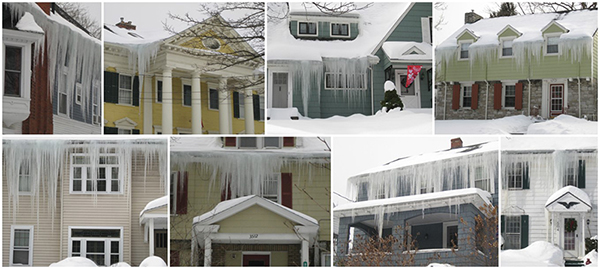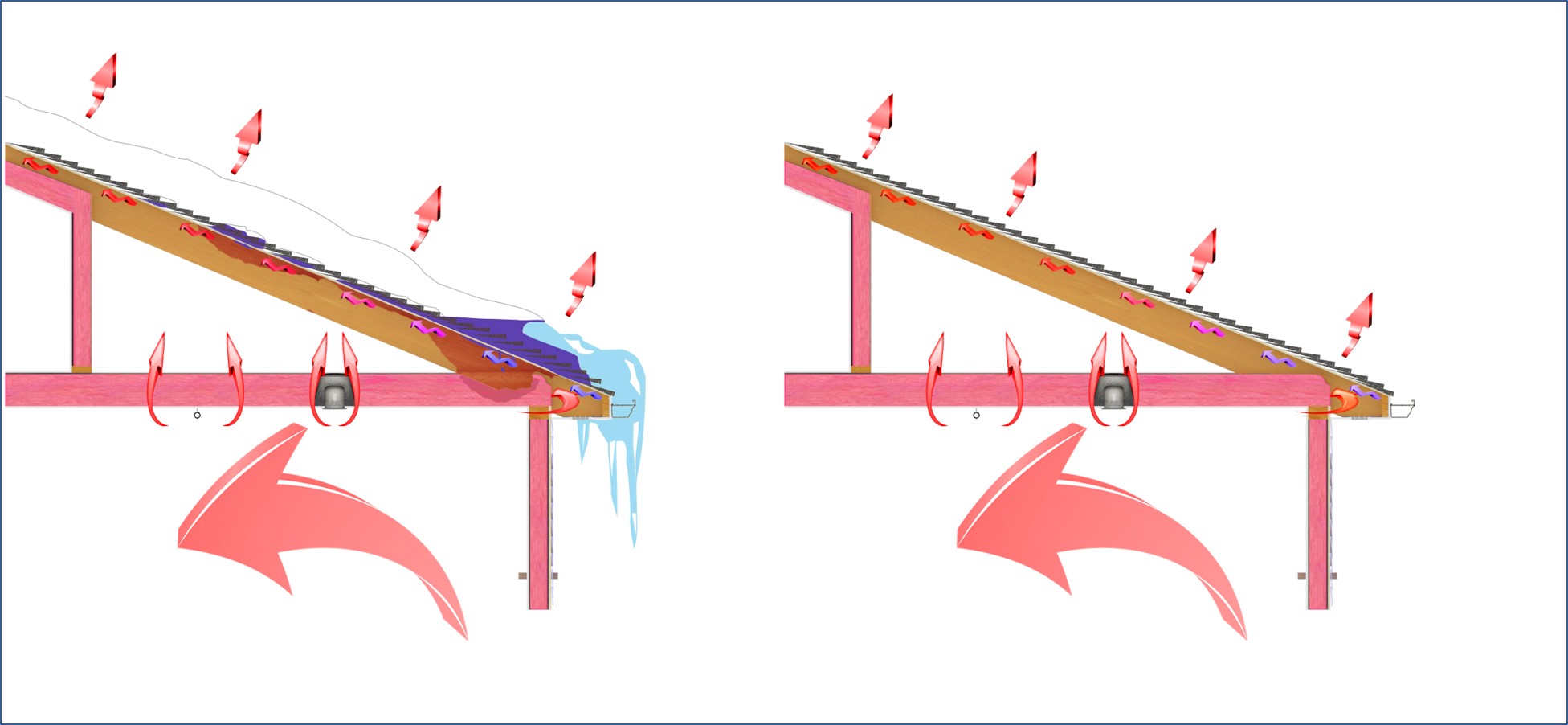

What do all of these differently styled Syracuse homes have in common?
The Icicles Project takes School of Architecture 1st-Yr classroom learning about building envelope performance out onto the sidewalks of Syracuse, and uses the images we record there to help tell the story of winter heat losses, their hidden costs, and what you should think about if you’ve got icicles [1].
Our project starts with snow-covered roofs. Why? Because given the right freezing outdoor temperatures - especially in the 20 to 25 degree Fahrenheit range - indoor heat escaping across an attic or cathedral ceiling, if not properly vented away, will melt the bottom layers of rooftop snow. This melted snow runs down the roof, hits the cold eaves, and refreezes into thick ice dams and cascading icicles [2].
So while icicles are a kind of beautiful winter ornament, stitching neighborhoods together under one glittering winter style, by further giving high visibility to home heat losses, icicles are also an excellent “free” indicator that something may be terribly wrong with a building envelope’s thermal performance. Even more important, the same heat losses icicles alert us to are going on whether there are icicles there or not - hour after hour, day after day, heating season after cold expensive heating season.

What icicles show so well for "free" is evidence of heat that is leaking to the cold outdoors through our ceilings, attics and roofs - whether the icicles are there or not.
So for all the cold days of the year without snow and icicles, the images collected in this website are here to offer you a reminder - about building heat loss problems that probably need looking into to protect your home, your wallet, and, as it happens, the environment. Take a look around; see who's got icicles in your neighborhood and who doesn't, and read some more to find out why and what you can do to reduce your heat losses.
1 The Icicles Project was funded in part by a School of Architecture 2012-13 Faculty Works Grant, and has received further communications support through a School of Architecture 2014 Small Project Award.
2 See, Tobiasson, W.; J. Buska; and A. Greatorex. 2001. “Guidelines for ventilating attics and cathedral ceilings to avoid icings at their eaves.” Performance of Exterior Envelopes of Whole Buildings VIII.